An ancient tomb complex containing 60 mostly young female bodies was discovered in the Negev region of southern Israel. Among the bodies were a plethora of exotic artifacts, including jewelry, alabaster vessels for spices, mortar-and-pestle figurines, weights, scales and arrowheads.
In February, Let the Stones Speak podcast host Brent Nagtegaal interviewed Dr. Tali Erickson-Gini, senior researcher at the Israel Antiquities Authority, about the discovery. Here is their fascinating discussion.
Brent Nagtegaal (BN): Thank you so much for being on the show. The discovery of a tomb complex dating to the first millennium b.c.e. in the Negev region of southern Israel was just released. Can you give us some details about this new discovery?
Dr. Tali Erickson-Gini (TEG): I drive past this particular area daily; I have for over 40 years. I’m still dumbfounded that we came across such an unusual discovery—it’s never been found in Israel. I live on the Egyptian border in a moshav called Kadesh Barnea, about 70 kilometers southwest of Beersheba. The tomb complex is located about halfway between where I live and Beersheba. It’s located near a modern T-junction. That’s very interesting because we know that the area where this tomb was constructed was next to an ancient junction—probably a T-junction of two very important ancient roads.
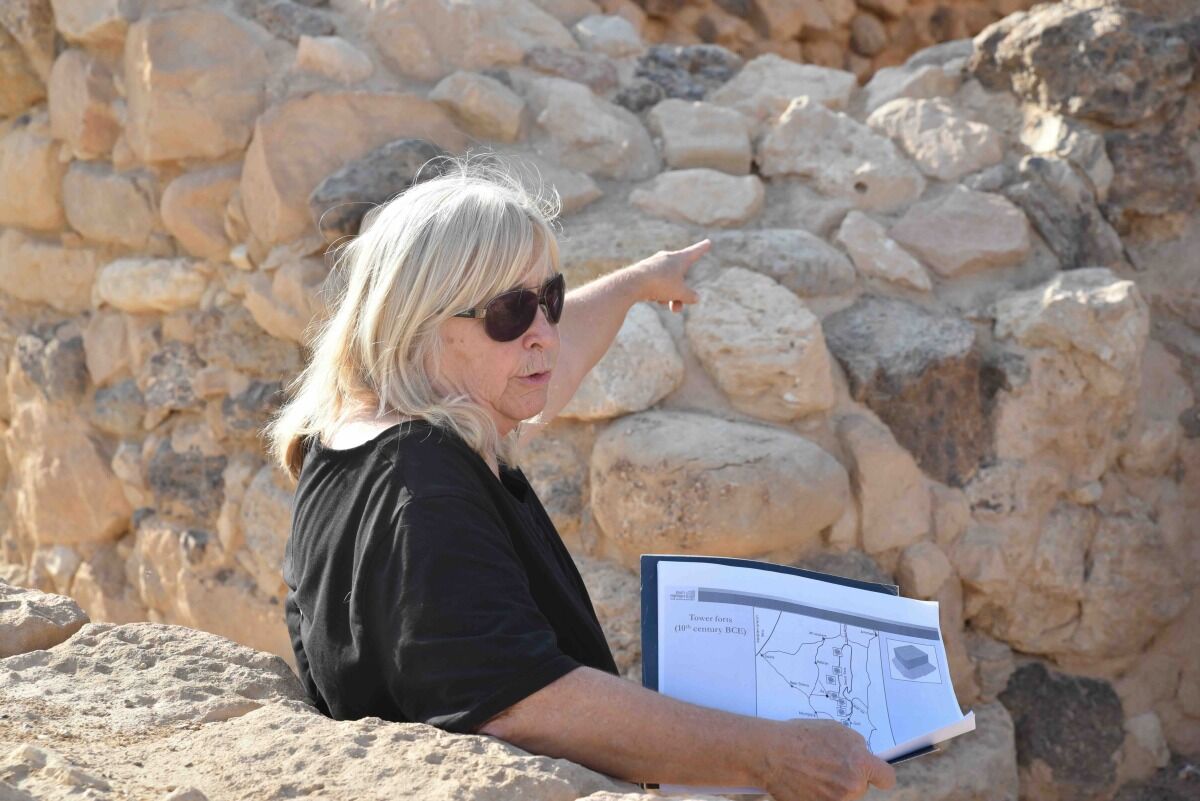
My colleague, Dr. Martin David Pasternak, is the excavator. He asked me to come out and check out the area when he started doing salvage excavation, which he was doing on behalf of the Mekorot water company. They were installing a new water line. We didn’t expect any big surprises. We know that there’s a lot of Early Bronze Age and Intermediate Bronze Age structures in that immediate area. The one structure that they pointed out was a little bit unusual because it was square. We don’t have a lot of square buildings of that kind.
Within a couple of days, Martin called me again and sent me a picture of part of a broken alabaster vessel. He said, “We think that this is from the Early Bronze Age.” I couldn’t see it that well, but the next day I went to visit the site. When I looked at it, I knew what it was. It was not the Early Bronze Age—it was actually from the first millennium b.c.e., much later in time. Still, it’s very early—about 2,500 years ago. It’s a type of alabaster vessel that was produced in Yemen, southern Arabia. We have these in southern Israel, and I’m probably one of the only people who really knows how to recognize them because we hardly have them anywhere else. We have them in a few places: mainly early Nabataean sites. Over the years, when researchers came across them, they didn’t know they were from Yemen. They assumed that they were locally made, even though we don’t have good sources of alabaster—not in the Negev. Maybe in the Jerusalem area there’s a source. But most alabaster usually comes from Egypt.
https://www.youtube.com/watch?v=lzgm9UW_cSs
But it turns out that many years ago, there was a publication about this type of vessel in Yemen. They’re called “beehive-shaped,” because they have a flat base. They can be bigger or smaller. The alabaster can be kind of marbled or it can be rather clear, but they always have similar features that you can recognize. This one was actually lacking the upper part, but I could tell just from the base.
Another thing that I also noticed, and I explained to Martin, was something that I had not actually excavated myself but I’d been taught by people working in the Negev who came before me. It related to the architecture on the inside of this building that he was excavating. When I looked at the way one of the walls was constructed, I said, Ah, this is something that’s been seen here in the Persian Period—from around 500 to 400 b.c.e. And this was where we started to understand that we had something else.
BN: This is fascinating. The initial assumption was that this was from the Early Bronze Age, and then a couple of interesting finds turn up—some architectural remains, plus the alabaster vessel. You said you’ve been in the Negev region working for over 30 years, so you’re very familiar with the other material finds in the area. Then, from the architecture and the alabaster vessel, you conclude that this was from the Persian Period. In biblical terms, the Persian Period is the period in which the Jews went back to rebuild the temple, and that continued on through Ezra and Nehemiah’s time, the late fifth century b.c.e.
Did you participate in the excavation or were you more of a consultant?
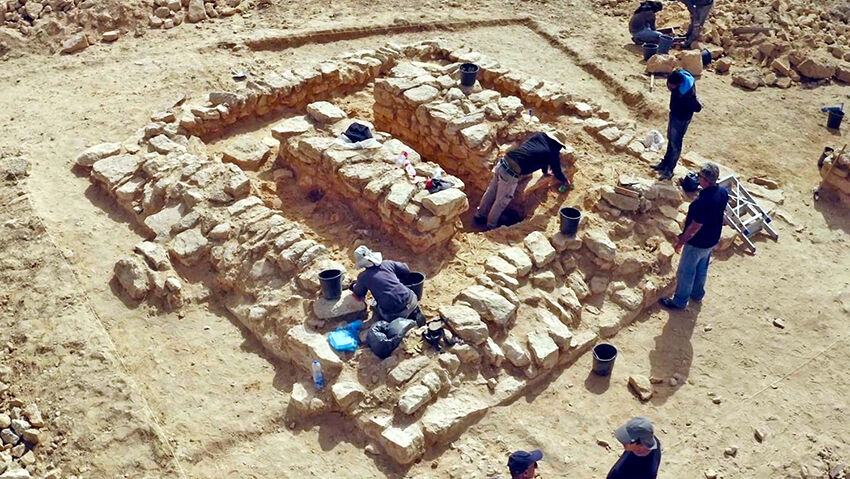
TEG: I was a consultant. We have a really good team of archaeologists in our Southern Regional Office of the Israel Antiquities Authority. I should mention that within a few hours after I was there and recognized the dating of the structure, we started finding skeletons. At first, we thought there’s probably some kind of a burial here. There are actually two structures—a bigger one and a smaller one. The bigger one is about 7-by-7 meters squared. It had two very heavy rectangular piers or columns that were built from fieldstone on the inside of the building that took up a lot of room.
Between the piers was where Martin started to find the skeletons. Our entire office was mobilized to come out and start excavating. It was a great team, and they were sifting everything. They were taking photographs—the documentation was extraordinary. We had a few regular workers but most of the work was carried out by archaeologists. That was very important because some of the finds were found because we had young people, including a young prehistorian Lauren Davis who recognized very tiny flint implements that we call microliths. That was a very important discovery.
BN: Most of our readers know that when you do an excavation, you might have an archaeologist directing it and then perhaps another archaeologist, or two or three archaeology students to help with documentation. But in this case, you had a lot of professionals excavating, which might be the reason you had so many different discoveries.
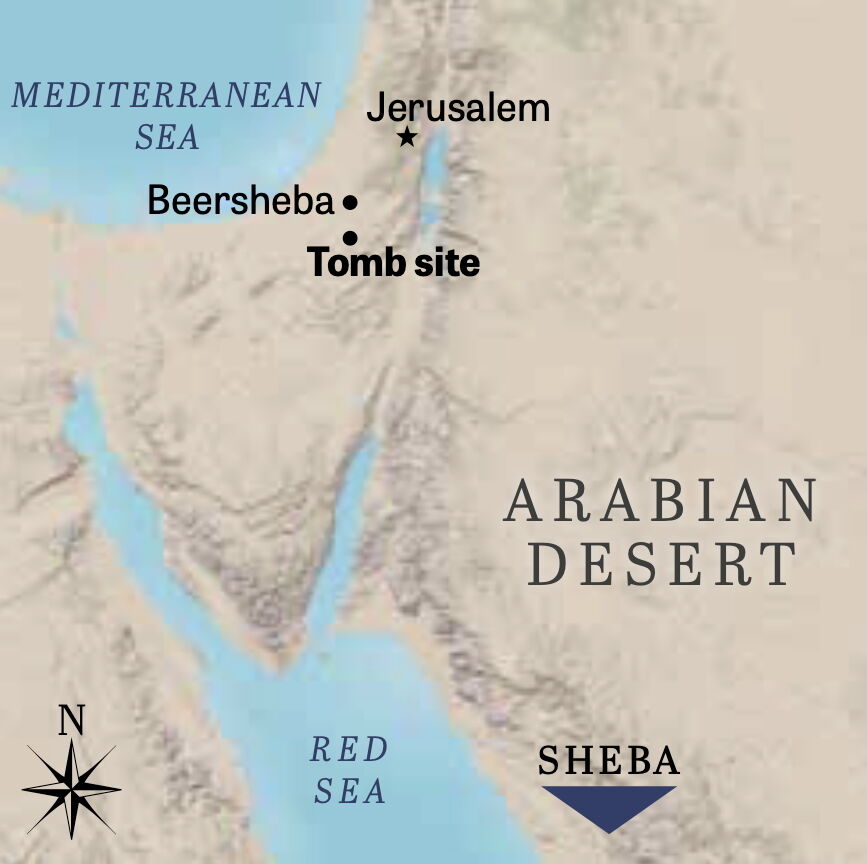
Can we talk about the geography more? Going back to this location, you started to find bodies in these two structures that were square shaped from the Persian Period. You said it was located at a junction along a major ancient road?
TEG: There were two ancient roads that met at this point. One of them doesn’t really have a name but it’s a track that we know was active in the Early Bronze Age. It is a major road from Egypt through the oasis of ancient Kadesh Barnea and crossing the Western border and entering the Negev highlands. That track eventually kind of turns southeast, going down through what we call the Big Crater (the Yeruham Crater or the Hatira Crater) and then down the Scorpions’ Ascent. From the Hebrew Bible, the Scorpions’ Ascent was a very important landmark that appears in several places. We’re talking about the early Bronze Age, probably around the Early Bronze Age ib period.
The second road has a name, and it was in use up until recent times. I call it a road, but it’s more like a track. All of these are like camel tracks. The second road was called the Darb es-Sultan. That is the Arabic name. In English, we call it the King’s Way. Any royal or king’s way is basically a road that caravans were required to use for tax purposes and for policing. That’s why it’s a royal road, and there are actually records from over 2,000 years ago talking about in some places that you could get the death penalty for not going on the King’s Road. They were trying to direct everybody over that road. So the Darb es-Sultan is this major road that goes down almost directly to Faynan. In the Early Bronze Age, you had copper mines there that were only about 15 or 16 kilometers east of the modern border between Israel and Jordan.
These are not the only roads, but those are two major roads. And the tomb complex is placed exactly where these roads meet.
BN: So you have a T-junction of these ancient roads, and right there at this crossroads you start finding bodies in these two complexes. What are some of the discoveries that led you to understand the function of the buildings?
TEG: Martin in the beginning thought the larger tomb had maybe one or two skeletons, but in the end, he had close to 60 skeletons in this one space. They were packed all the way through the structure. And they were full of artifacts. The excavators could see right away that there were women involved because they could see bracelets still on their arms.
We started coming up with quite a lot of alabaster. These were produced in southern Arabia, in the area of Yemen, to transport frankincense and myrrh. We don’t know which, but we can assume from what we found there that quite a lot of it was probably dried. Frankincense and myrrh are tree resin that are collected and then allowed to harden. Then, in order to use them as incense, you have to grind them up. We found a mortar and pestle and several jars and lids. The amount of alabaster that’s coming from that part of the world was just amazing.
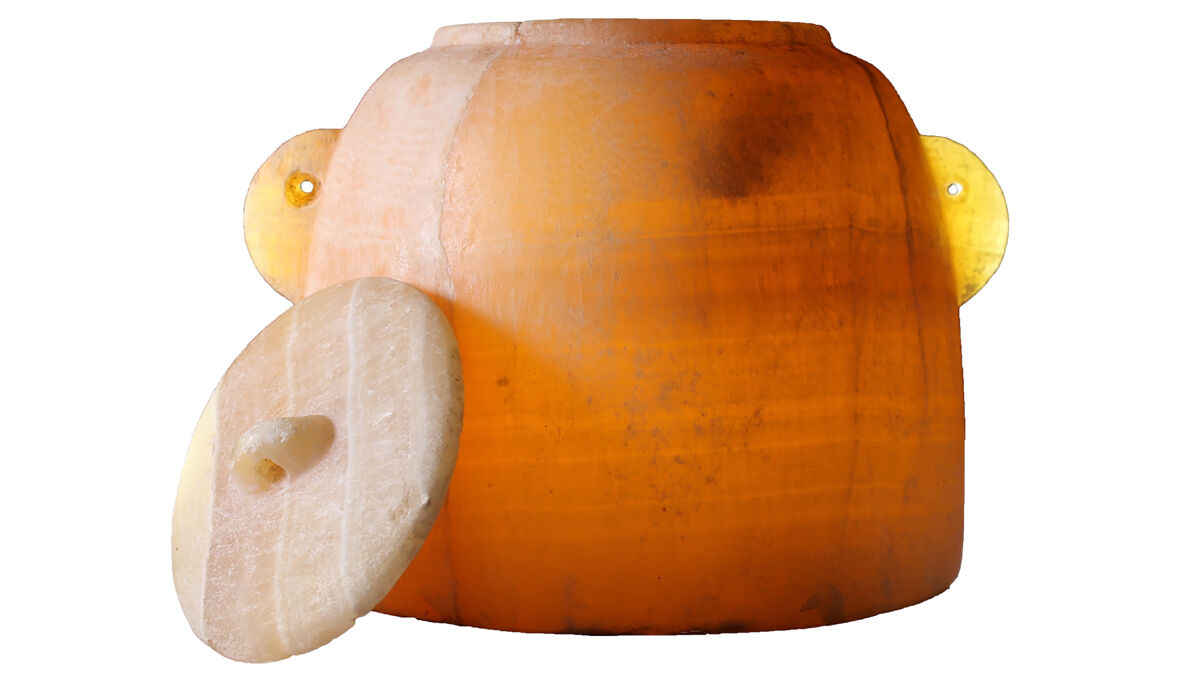
Another thing that we noticed, and we’re still noticing as we work on the finds, is that almost all of these things were broken. We had at least three or four incense burners: One was a Mesopotamian-type terracotta, another one was basalt, and another was sandstone. They had all been intentionally broken. Not only had they been broken, you could see the hammer marks where they broke them in half. These were heavy vessels; they had to work pretty hard to break them. They also broke the alabaster vessels. There was a tendency to break everything.
BN: What does that mean?
TEG: We know from ancient history and archaeology that they would break vessels as part of the rituals of the Egyptian goddess Hathor. We also have the example at Tel Lachish where we have a lot of these small limestone incense burners that are usually broken. They found dozens and dozens of pieces of them. Now we can say that they were probably broken ritually after use because that’s what we see in these tombs.
BN: So they might use it once, as an incense altar, and then after it is used one or two times they break it and leave it there?
TEG: And not just the altars, also the vessels that were carrying the incense resins and even the mortars. They seemed to be preparing this resin for use to be burnt as incense. It was really amazing.
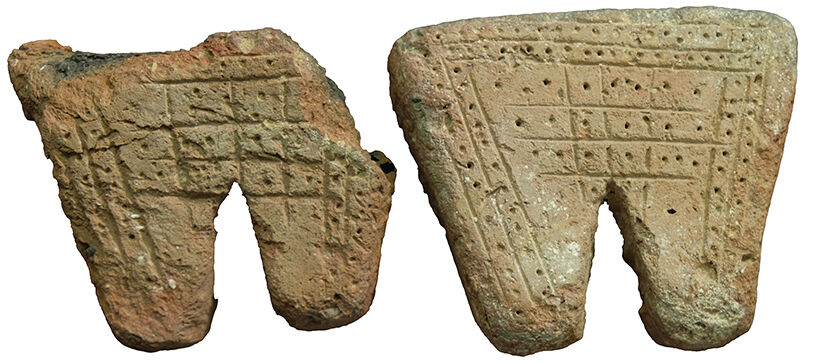
Now I want to mention that there’s a second, smaller tomb that has only one column or pier holding up what would have been the ceiling. There we had another seven individuals. But we also had, again, the alabaster vessels, the mortars and the same burners. Again, the excavators were very good, taking photographs constantly and drawing everything, and they could see that some of the skeletons had been pushed aside or bodies had been pushed aside to put in more. So we can assume, from that and also from the finds, that the tomb was occasionally opened up and more bodies were placed inside of it.
We’ve talked about the Persian Period, but we also have earlier material, so it seems the structure was probably originally built sometime at the very end of the First Temple Period—the Iron Age iic. It would be sometime before the Babylonian invasion and destruction of Jerusalem, and it continued to be used into the Persian Period.
BN: So this site was constructed sometime perhaps at the end of the seventh century, and then multiple times you’ve got more bodies being put in it through the Persian Period. So these are people that are in a traveling party I assume, that are going through this region and they die on the way? Or we don’t really know?
TEG: We don’t really know. I can tell you that we had another grave that was discovered about 45 years ago not too far away, also off the track of the Darb es-Sultan. There they found a mass grave of men, women and children. I think over 20 individuals or more that looked like they had been raided and massacred, but here we don’t see that.
BN: This is interesting. In the Bible there are several references to trade from the area of southern Arabia, the area of Yemen. They’re bringing up spices, like you say. It’s mentioned in the books of Jeremiah and Ezekiel. Even in the book of Nehemiah you have this increasing mention of Ashdodites, a power base from Gaza but also perhaps further to the south as well. This is the time frame of when these caravans were traveling up?
TEG: We’re talking about a time period when what we know from historical and archaeological sources is that this area, all of northern Arabia, the Negev and Sinai, were controlled by the Qedarites.
BN: Do you believe these Qedarites were middlemen who were operating through this region?
TEG: That seems to be the case. We have so much material from Yemen, or southern Arabia, that it almost looks for sure that there were Yemenites, or people maybe from the area of Ma’an, or Sheba, the same area the Queen of Sheba came from about 400 to 500 years earlier.
We’re talking about traders that are coming through there. The ones that are in control of the roads are the Qedarites, and their control extends right up almost to the Nile Delta. I’ve given presentations talking about the tombs. I called it “The Negev Before the Nabataeans.” We talk about the Nabataean incense road; this was part of the incense road before the Nabataeans. The question is: What happened? Why did the Nabataeans show up all of a sudden?
There’s a very good researcher who works in Petra, Dr. Robert Wenning from Germany. He has proposed, and I think it’s a very good proposal, that the Qedarites, around 385 b.c.e., had joined a revolt together with the king of Salamis in Cyprus against the Persian Empire. From that point, suddenly we’re not hearing about the Qedarites. So it appears that the Qedarites had their trade rights taken away from them by their imperial masters, and this is given to the Nabataeans. So suddenly the Nabataeans are the ones that are in control and not the Qedarites (but they’re very closely connected). The Qedarites and the Nabataeans are coming from the northern Negev, but they’re trading and they’re bringing incense and exotic goods from southern Arabia, and also picking up things as well from ports, and bringing it into the Mediterranean Basin and Egypt.
BN: Why have these largely young females been buried here?
TEG: We could tell just from the finds that there were a lot of women involved. We recently got our preliminary anthropology report. It points to two groups of people there: One group is made up of young women between 14 and 20 years old; the other group is men ages 30 to 40 years old. It’s very intriguing. There are no children. There’s no babies. I had already proposed before, and I think the findings are supporting it, that the women that they found were either traded or bought.
The reason I said that is because many years ago we had a third-century b.c.e. inscription from Yemen that talked about buying women—women that were bought and brought to that place. Thirty of them, the biggest group of them, were coming from Gaza. At our tomb complex site we’re not that far away from Gaza—around 40 to 45 kilometers away. Then we have other women: The list mentions an Egyptian, a Greek woman, women from Moab, Ammon and Edom. It doesn’t mention any women from Judah, but of course this is after the end of the kingdom of Judah. We’re talking about the Persian administration and later.
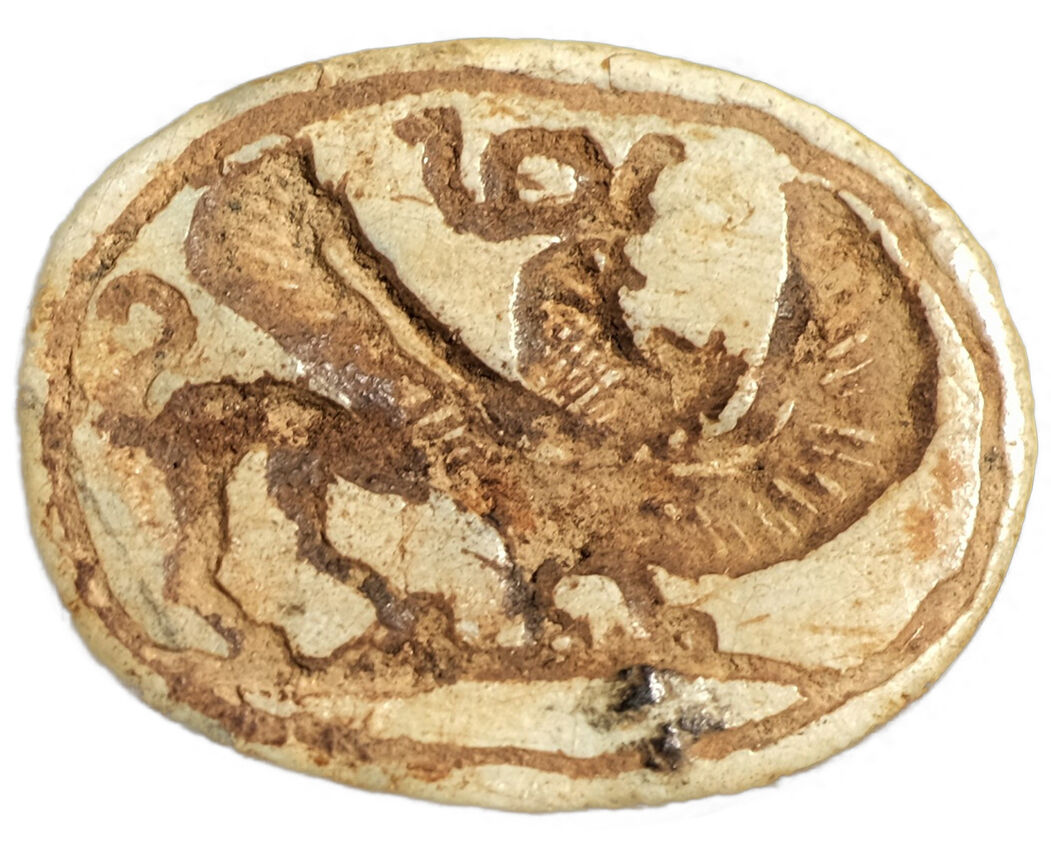
BN: So this tomb complex would be on the path of trade between Gaza and Yemen, correct?
TEG: Yes, absolutely. It’s a major junction and there seems to have been symbolic and cultic significance to that being chosen to have a crossroads burial. One of the ideas that was put forward many years ago about the women that are listed on the document found in Yemen is that they were bought to be temple prostitutes in the temple in Ma’an in Yemen—based on the Mesopotamian type like you’d have in Babylon, spoken about by Herodotus around that time. We also have other records where women are being bought to be sold as temple prostitutes. That’s an important point because some of the finds that we discovered in the tomb actually seem to have had some kind of significance.
For example, we found very large cowrie shells. We have cowrie shells all through ancient history and prehistory. The small ones we have as jewelry. But in this tomb, they found 10 very large ones—as big as your fist. The only time we’ve been seeing these very large cowrie shells has been in temples of female deities. For example, in Petra, in the Temple of the Winged Lions, and in another temple that was discovered from the Roman period down in the Eastern Desert of Egypt along the Red Sea coast. Here we have them too, and again, there were a lot of trinkets as well. There were scarabs—some of them were Phoenician type and a very small number of ceramic vessels. They were very small and portable. One of the earliest ones we have is a cooking pot with a seal impression that had been pressed into the handle, which is found right at the end of the First Temple Period before the destruction of the temple in Jerusalem. It’s a Judean type.
We just discovered that there were small bronze or copper scales that were probably used. Not only scales, but also weights. One of the weights is a Judean type. Just yesterday we discovered that we actually have Paleo-Hebrew written on it. We couldn’t quite see it before. We’re consulting with experts on it, and we’re going to try to get some better photographs to be able to see what’s there. We keep finding new discoveries from this excavation even two years later. We’re just going through the finds and discovering things—it’s fantastic.
BN: So these discoveries you’re talking about, will they be exhibited?
TEG: Well, Martin and other researchers have been working on preparing it for publication. We still have work to do. We have some very good researchers.
BN: Let me make sure I understand this correctly. If traders wanted to get somewhere from the Western Mediterranean, say Greece or Phoenicia, they would have to travel through Gaza or this area we call the Philistine coast, and then if they are going to take a journey down to Arabia, they had to travel on this road?
TEG: Exactly. There’s a couple other ways they could go, but this was the normal way. It’s going basically down into the Aravah through what we call Edom and then on down from northern Arabia to southern Arabia
BN: So this array of really rich discoveries speaks to the mercantile nature of the trade route.
TEG: Absolutely. Especially the scales. I also should mention that the buried women had jewelry. No gold. We found a couple of pairs of silver earrings, but there were bracelets that were mostly made from copper. So they had a lot of trinkets and a lot of beads and polished stones and that kind of thing. It reminded me of a quote from Homer talking about the shifty-eyed Phoenicians selling all their trinkets and the women coming up to the ships of the Phoenicians to buy all of their trinkets. We found tombs of these kinds of trinkets.
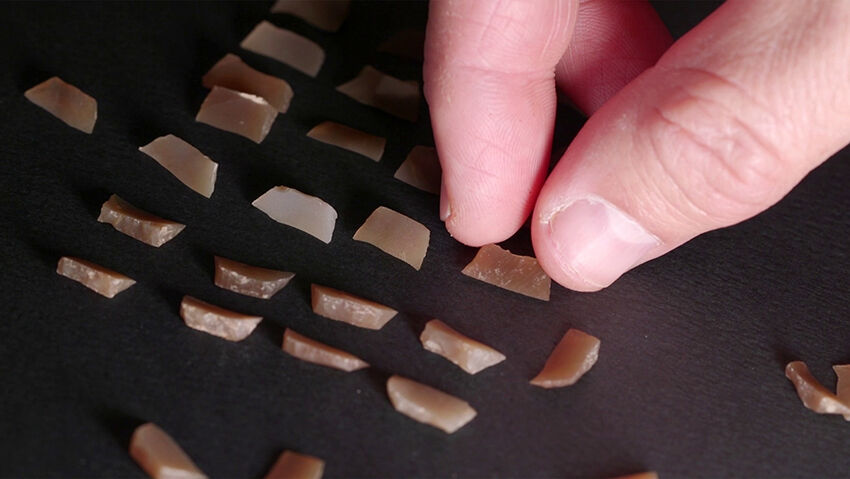
One of the newer discoveries that has come up in the last half year were the microliths that I mentioned earlier.
BN: Can you explain what that is for us?
TEG: A microlith looks almost like a little flake. We call them arrowheads but they’re not the kind of arrowhead that has a point at the end. They’re kind of blunt on one side. These would have been fixed to the shaft of an arrow. They would probably have some kind of poison or something on them to maybe knock out or to slow down rabbits or small game. There were over 40 of these tiny flint arrowheads. They’re very well known from prehistoric times, but to find them in a tomb sealed all together in one place was strange. When our expert, Dr. Jacob Vardi, started going through them, he called us and said, “There’s something going on with this. The only place I know of that I can find that these would have been from in this time period is from Yemen.” We said, “Well we know that; we already have all these other things from Yemen.”
BN: So he knew nothing about the other finds and was able to put it together that they were from Yemen.
TEG: Yes, he was not in the original excavation. He was working independently on these arrowheads. A few of these arrowheads actually had red ocher. One of the arrowheads was actually quartz. That is interesting because, according to our researcher Lauren Davis, in Africa they don’t have flint, so they made these monoliths out of quartz. Later, when I started going through the stone finds, which I’m writing up, I found a whole core of crystal-clear quartz. When we showed it to Dr. Vardi, it turns out it was used for making microliths.
BN: No way.
TEG: And this doesn’t come from Israel. It had to have come from quite far away—probably somewhere in Africa, maybe Madagascar or somewhere like that. We’re looking into it. What I find very interesting is why would you have these kinds of implements? Dr. Vardi could see that they were not used. They were made by one very skilled person—somebody who knew what they were doing. They were all very uniform, and there’s over 40 of them.
I raised the possibility that they were used for divination—what’s called belomancy in ancient times. In the book of Ezekiel and the Hebrew Bible, we have a statement talks about the king of Babylon standing at the crossroads (Ezekiel 21:26). Crossroads in Hebrew, by the way, is interesting. It does not say crossroads, it says Em HaDerekh—mother of the road. We have here these women that are buried at a crossroads, at Em HaDerekh. He stands there and he reads the liver and he shakes the arrows. Where else do we have arrows used for divination? In the Kaaba. At the time when Mohammed took over the Kaaba in Mecca, one of the things they find are arrowheads. If you look into the Arabic word for arrow, it actually can mean luck. Of course, luck is something you would have for divination. So I think that we have a very strong case for seeing these artifacts as related to divination. When we go to Yemen, and this is what Dr. Vardi discovered, we’re finding them in tombs and we’re finding them in temple sites. Here we have them here in the Negev in this particular tomb. It’s an amazing discovery.
BN: Absolutely. You could consider the Negev as a place that might be lacking a lot of excitement. However, in terms of archaeology, this was just an amazing discovery with such a rich variety of wares that came from all over the world.
Thank you for your time.
TEG: You’re welcome, Brent.